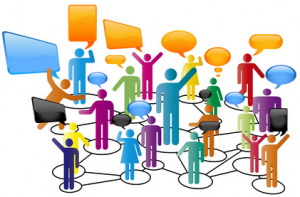There’s a new era coming in business intelligence and people analytics.
Powerful dashboards for presenting people analytics information to help drive decision making have been a boon for HR professionals. They help bring increased visibility to the HR function within an agency. But they’re not enough, and agencies’ continued struggles to become data-driven are clear evidence.
An Ongoing Struggle for Analytics Adoption
There are several reasons why even with new, sophisticated technology that can now analyze and report on information, the message does not get through:
- Not enough in-house expertise
- Sharing information that is neither compelling, interesting or insightful
- A struggle to make the information consumable.
Gartner has reported that only 28% of potential business intelligence users within most organizations currently use the technology to make decisions, continuing to hamper Return on Investment (ROI). Reports by other analysts report similar grim findings.
Today’s world has lots of data and a myriad of pretty dashboards, but analytics is still not gaining a foothold in federal agencies.
What’s going on? What’s missing?
Faulty Presentations
It’s not the data, it’s the presentation of the data.
How many times have you listened and watched a presentation by a really smart person – someone who probably knows a lot more about a particular subject than you do – but nothing resonated and you didn’t really learn anything?
As Forbes pointed out recently, it’s “felony-level PowerPoint abuse” and the victims are “those of us in the audience.” People typically don’t learn by listening to someone drone on; and if they do happen to learn, they are not likely to be engaged or excited about what they learned.
Presentations that are distributed via email to a group of executives, other decision makers or a team offer little opportunity for input or an additional deep dive into the data.
What you see is what you get.

Gartner has indicated that around 80% of business intelligence projects fail, and it cites poor communication and collaboration as the primary reasons. It follows that enabling people to integrate fact-based information into their natural decision-making processes is critical to help generate an analytics culture and realize the desired benefits of a data-driven culture.
As we deal with people analytics that have the potential to drive human capital decisions, this failure rate can be devastating.
Empowering People through Analytics
The good news is that business intelligence tools that change the way data is presented, shared and analyzed are gaining traction, albeit slowly. These tools have a huge impact on what agencies can do with the data they have. What’s driving this evolution, besides the above-mentioned failures of analytics to date, is that so many more people within an agency can and should be part of the analytics discussion.
People are much more likely to retain information – and become intrigued by it, by listening to an interesting story than by listening to recitation of points on a slide. We’re more likely to retain information, learn from it and be able to act on it if it contains up-to-the-minute data. And we’re more likely to retain information if we can interact with the presentation, add our own thoughts and comments, collaborate with others and socially share with others with a need to know.

When it comes to people analytics, there is a wide range of people outside HR that could use the information to make better and faster decisions. And for HR to elevate itself and become a more strategic asset to the agency, these tools are very helpful in achieving buy-in from others. If the data is not compelling enough – or more importantly, is not perceived as compelling enough – buy-in is difficult or impossible to achieve.
In addition, because information is typically required at regular intervals (e.g. monthly or quarterly), there is also significant overhead in report preparation. Report producers typically require several hours to compile information and prepare reports for distributions, an inefficient task.
Successful organizations understand that by empowering their people, better decision making is achieved throughout their organizations. With more employees of all levels and expertise, more powerful tools are needed that accommodate these different types of users, in addition to executives. Data analytics is no longer solely for the technical employees – stakeholders throughout the agency are now big users, and they need something besides old, static dashboards.

These new tools not only improve presentations by allowing interactive reporting and embedded rich content, but they also embrace team and organizational collaboration through public and private commenting, as well as social sharing. This consumerization of data analytics is another driver of enhanced presentation and story-telling tools.
Clear communication and collaboration is critical to boost business intelligence success rates and user adoption of analytics within federal agencies. Thankfully, tools to assist with this are emerging. In a future post, I’ll dive into more detail on some of their specific capabilities.





Leave a Reply
You must be logged in to post a comment.